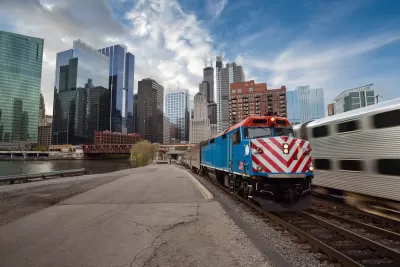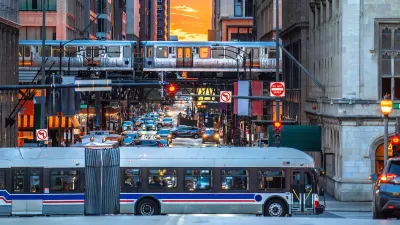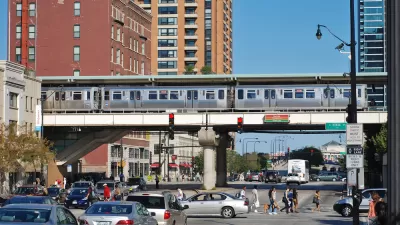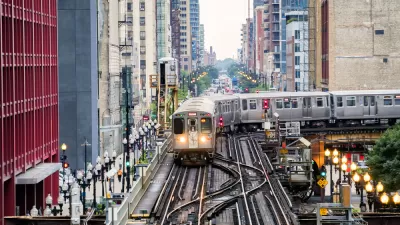Public transportation that serves regional areas makes sense, but the United States has been slow to pursue strategies and policies that foster these types of systems.

Yonah Freemark writes that regional transit systems are an important way to create effective and robust mobility networks. In places like Germany and France, commuter rail has been integrated into larger systems offering fast and frequent service that connects suburbs and downtowns.
"These regional rail services have transformed metropolitan travel in the places where they’ve been implemented because they make show-up-and-go, fast service available to whole regional populations, not just those who live in center cities, where frequent local rail and bus options are available," says Freemark.
But regional transportation is not characteristic of transit networks in the United States, and Freemark uses Chicago as a case study, where the Chicago Transit Authority operates buses and light rail and Metra runs commuter rail service. While the two agencies receive funding from the same sources, they have been set up as competitors.
And political control of the agencies is also part of the issue, notes Freemark. As a result, Chicago Mayor Lori Lightfoot, who controls the CTA, opposed a proposal to lower fares on Metra to make it more accessible to riders because of the potential decrease in CTA ridership that would result.
Freemark urges a rethinking of the goal of public transit. If it is about providing accessible, affordable mobility options, then developing regional transportation needs to be the focus. "Finding the political will to surmount these institutional constraints and develop regional rail should be a priority in virtually every metropolitan area," he adds.
FULL STORY: The perverse incentives produced by institutional division

Study: Maui’s Plan to Convert Vacation Rentals to Long-Term Housing Could Cause Nearly $1 Billion Economic Loss
The plan would reduce visitor accommodation by 25,% resulting in 1,900 jobs lost.

North Texas Transit Leaders Tout Benefits of TOD for Growing Region
At a summit focused on transit-oriented development, policymakers discussed how North Texas’ expanded light rail system can serve as a tool for economic growth.

Why Should We Subsidize Public Transportation?
Many public transit agencies face financial stress due to rising costs, declining fare revenue, and declining subsidies. Transit advocates must provide a strong business case for increasing public transit funding.

How to Make US Trains Faster
Changes to boarding platforms and a switch to electric trains could improve U.S. passenger rail service without the added cost of high-speed rail.

Columbia’s Revitalized ‘Loop’ Is a Hub for Local Entrepreneurs
A focus on small businesses is helping a commercial corridor in Columbia, Missouri thrive.

Invasive Insect Threatens Minnesota’s Ash Forests
The Emerald Ash Borer is a rapidly spreading invasive pest threatening Minnesota’s ash trees, and homeowners are encouraged to plant diverse replacement species, avoid moving ash firewood, and monitor for signs of infestation.
Urban Design for Planners 1: Software Tools
This six-course series explores essential urban design concepts using open source software and equips planners with the tools they need to participate fully in the urban design process.
Planning for Universal Design
Learn the tools for implementing Universal Design in planning regulations.
City of Santa Clarita
Ascent Environmental
Institute for Housing and Urban Development Studies (IHS)
City of Grandview
Harvard GSD Executive Education
Toledo-Lucas County Plan Commissions
Salt Lake City
NYU Wagner Graduate School of Public Service





























